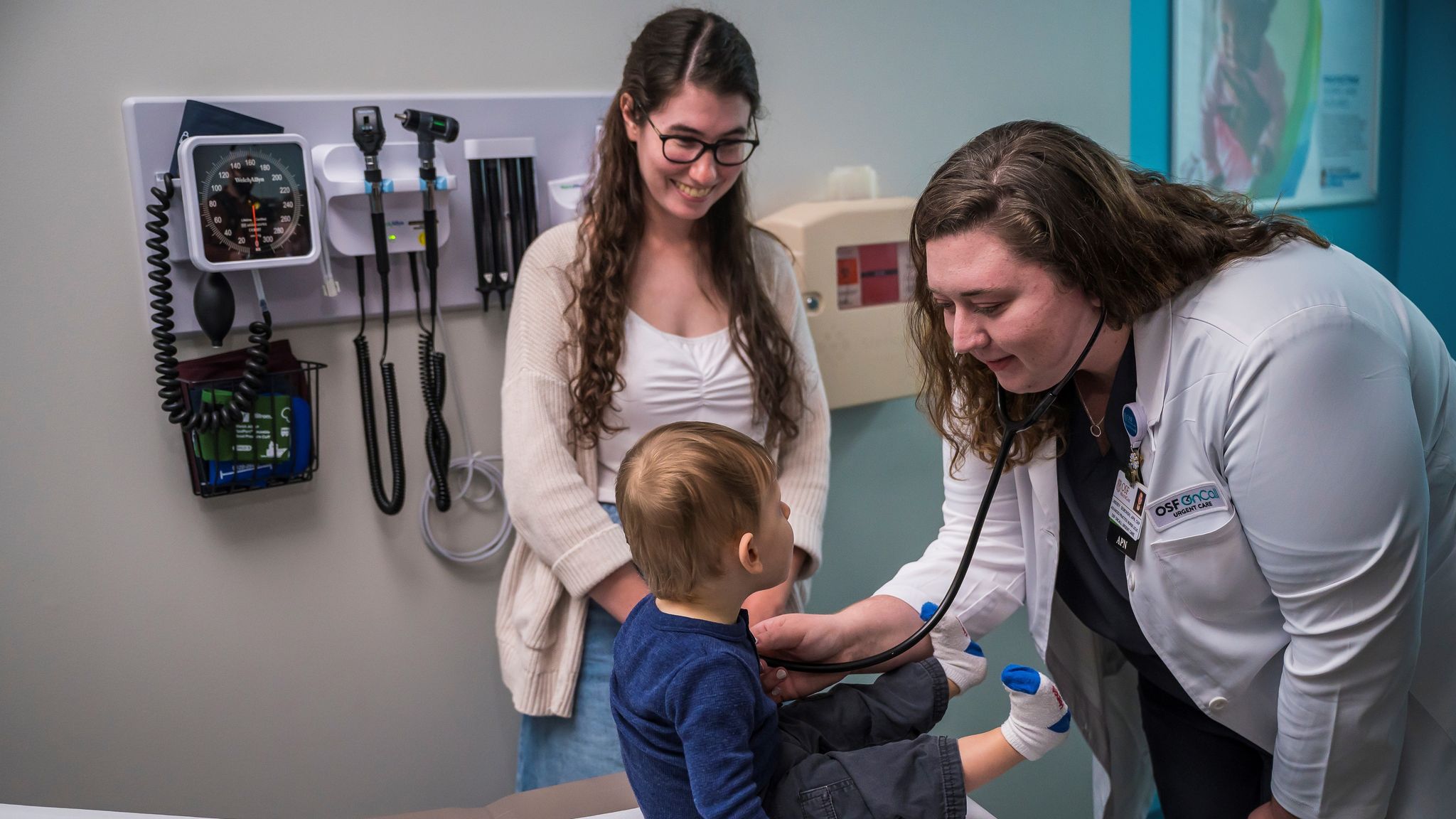
9 things you didn’t know you can do at urgent care
We all know that urgent care can take care of lots of injuries and illnesses like coughs, colds, fevers, rashes, burns and bruises.
But did you know there’s so much more? Jacob Mefford, clinical director of OSF OnCall Urgent Care, shared some of the most surprising facts about this high-quality, convenient, affordable kind of care.
What urgent care can do
1. X-rays
Need urgent care?
Many are surprised to learn that urgent care does X-rays.
On-site providers will determine an appropriate treatment plan. A radiologist reviews all X-ray images taken at urgent care. Common X-rays in clinics include wrists, ankles, arms, legs, chest X-rays and more.
2. Stitches
Urgent care does stitches for injuries that need them. How do you know when you need stitches? If your wound continues bleeding after five to 10 minutes of applying pressure or is deep and gaping you probably need stitches. If you have concerns about infection, scarring or an outdated tetanus immunization, an urgent care professional has you covered.
3. Physical exams
You can get a physical at urgent care. This is a great option if you need a physical quickly and don’t have time to see your primary care physician. Types of physical examinations that can be done in the clinic include work, school or sports physicals. If your employer requires a drug screen, urgent care has you covered for that, too. If you need certain vaccines, you should make an appointment with your primary care provider.
4. Referrals
Urgent care providers can refer you to a specialist when you aren’t sure what kind of care you need. They know how to check your condition and determine what to do next. If you need to see a specialist, they can connect you with the right doctor to make sure you get the treatment you need. Plus, urgent care providers often have established networks with specialists, so it’s easier to get an appointment.
5. Prescription medication for treatment
Urgent care providers can prescribe medications. That means you can get prescriptions you need quickly. Antibiotics can even be prescribed for symptoms such as tooth pain or infections.
6. Sexual and women’s health issues
People often ask if urgent care does STD testing. Many do offer testing for sexually transmitted diseases (STD), also known as sexually transmitted infections (STI). Urgent care can prescribe antibiotics to treat STIs or other kinds of bacterial infections. However, some STIs may require more extensive patient education and ongoing treatment.
Urgent care can treat gynecological issues and some other women’s health concerns, too. The providers can also refer you to OB/GYN care, if needed.
7. Pediatric care
Pediatricians are busy, which sometimes leads to long waits before an appointment is available.
If your child’s illness or injury needs attention right away but isn’t an emergency, urgent care is the place to go. Your child’s issue can likely be diagnosed and treated with a walk-in or virtual visit.
8. Doctor’s note
Going to urgent care for a doctor’s note is another benefit. Getting a sick note for work or school to verify when you need sick days is a convenient option at urgent care. You don’t have to wait for an appointment with your primary care provider, meaning you can return to work sooner.
9. Minor fractures, sprains and strains
Whether it’s a sprained ankle, a wrist fracture or a strained hamstring, minor injuries can be taken care of outside of the emergency department. Urgent care can diagnose and stabilize broken bones, and refer you to the appropriate care setting or direct you to the emergency room, if your injury requires.
Other benefits
At most clinics, like OSF OnCall Urgent Care, you can walk in without an appointment or make an online reservation. Some services are even offered virtually. Most insurance plans are accepted.
When to seek emergency care
Urgent care isn’t a replacement for emergency services or routine preventive checkups with your primary care provider.
If your medical need is an emergency, such as chest pain, difficulty breathing, shortness of breath, severe dizziness, confusion or headache, stroke symptoms or a severe allergic reaction, go to the nearest emergency department.